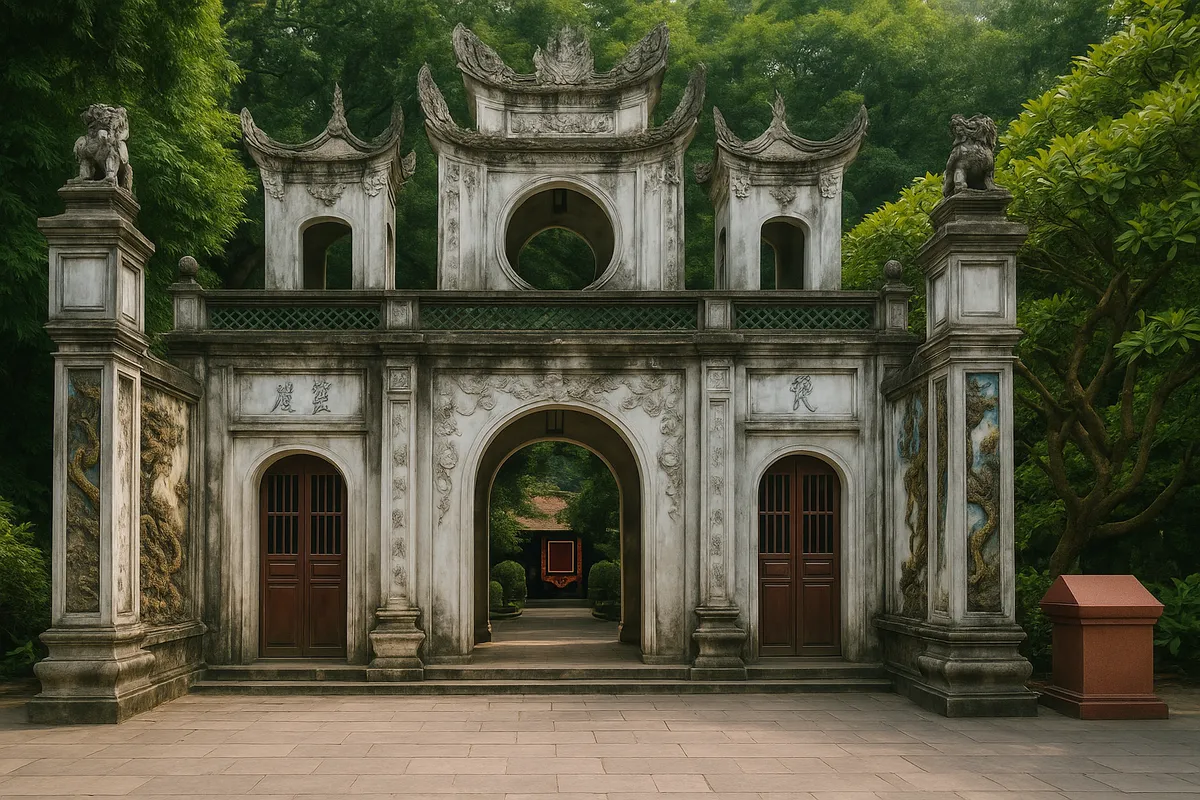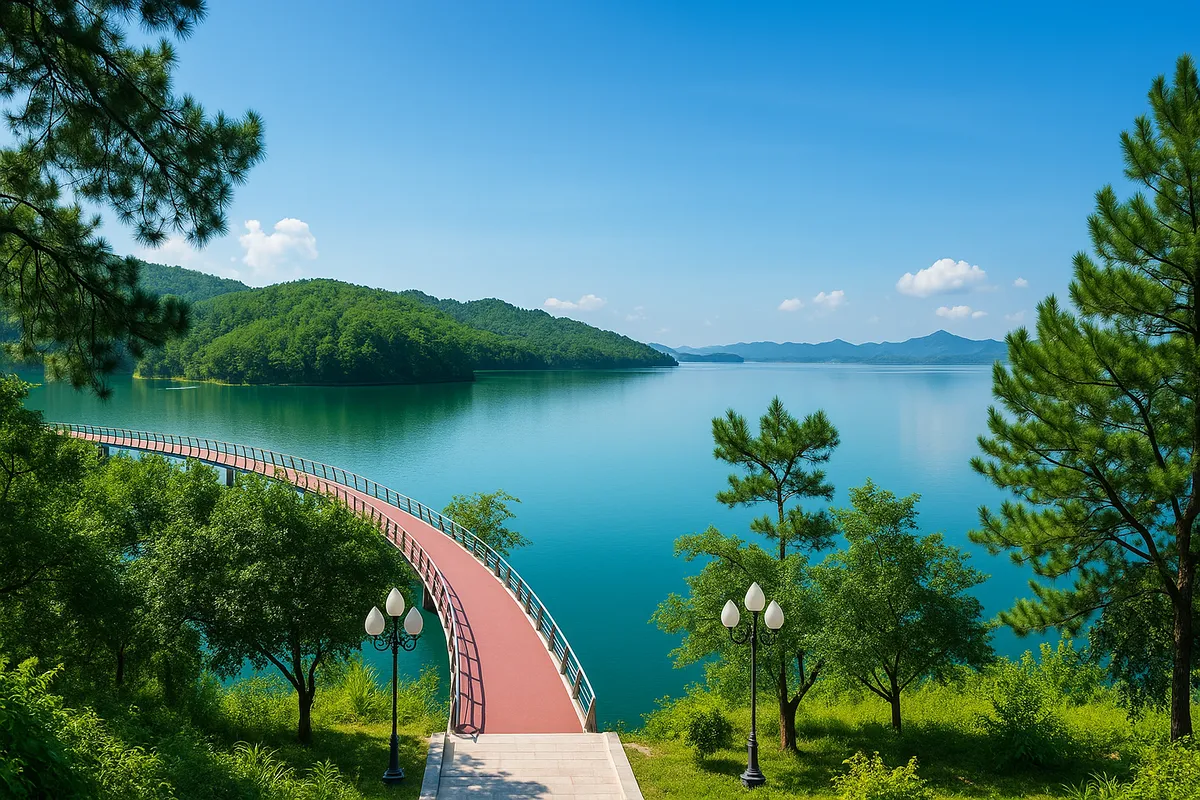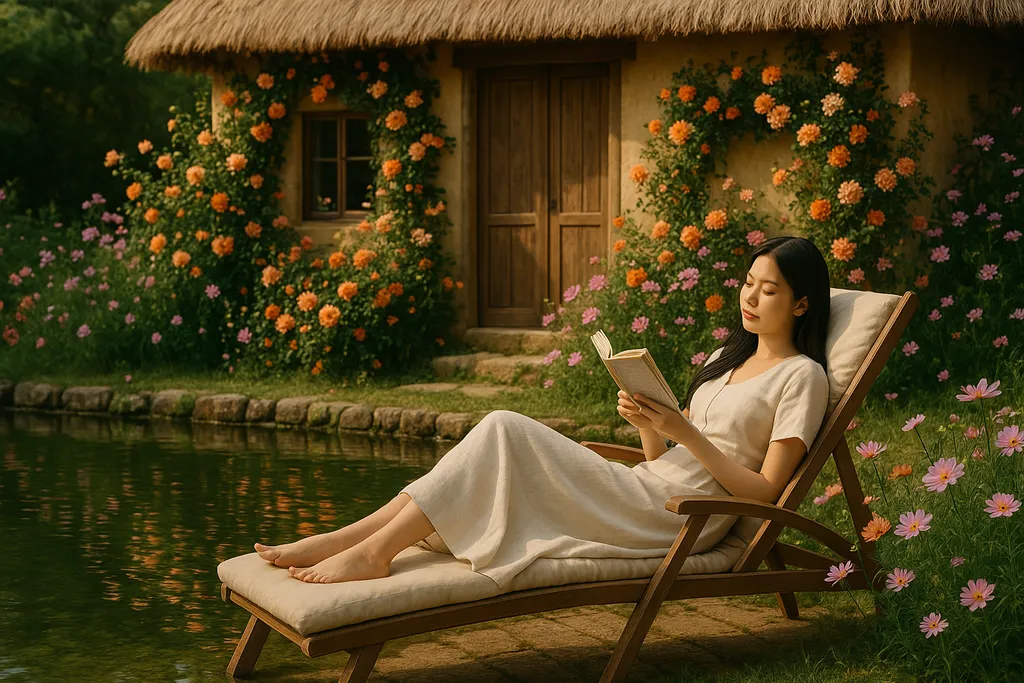Quan Thanh Temple Night Tour Rekindles the Breath of Ancient Thang Long
- Monday, Jun 02, 2025, 15:17 (GMT+7)
Quan Thanh Temple Night Tour Rekindles the Breath of Ancient Thang Long
Hanoi has officially launched a new night tourism product titled “The Bell of Tran Vu” at Quan Thanh Temple. This marks a new milestone in the city’s ongoing strategy to develop urban tourism in connection with cultural heritage. It is the fifth night tour developed in the capital, following previous experiences at Hoa Lo Prison, Thang Long Imperial Citadel, the Temple of Literature, and the Vietnam Literature Museum. The tour lasts approximately 90 minutes and is held weekly in the evenings starting from August 2025, with a maximum of 100 visitors per night to ensure high-quality experiences.
The tour features two main parts. The first is a live performance that reenacts traditional rituals such as palanquin processions, ceremonial offerings, sacred readings, and folk art inspired by the legend of Saint Tran Vu. The second part offers a spiritual night-time exploration of Quan Thanh Temple. Visitors are introduced to valuable artifacts such as the bronze statue of Huyen Thien Tran Vu, an ancient bronze gong, a pair of reborn bronze lanterns, and cultural activities including tea tasting, calligraphy, and traditional costume displays. The tour is not simply a sightseeing trip but a cultural and historical journey conveyed through performance and direct interaction.
Quan Thanh Temple, also known as Tran Vu Temple, is located beside West Lake. It is one of the four sacred temples that once protected the ancient capital of Thang Long. The temple is dedicated to Huyen Thien Tran Vu, the Taoist god of the North, who was believed to dispel evil and protect national peace. Originally built during the Ly Dynasty and restored multiple times, the site holds great historical value and showcases remarkable sculpture art. A highlight is the nearly four-meter-tall bronze statue of Tran Vu, weighing around four tons, cast in the seventeenth century and recognized as a national treasure.
The use of a sacred space like Quan Thanh Temple for night tourism reflects a significant evolution in Hanoi’s tourism approach. It moves beyond the traditional limits of daytime operating hours and single-layered experiences. This new product is designed with immersive context, integrating sound, light, and artistic performance to deliver an authentic emotional atmosphere. As a result, the experience becomes fully sensory, responding to the growing demand for deep cultural tourism.
In terms of urban tourism development, this tour is part of a broader strategic chain of activating heritage at extended hours. Since 2022, Hanoi has tested various night programs aimed at increasing visitor stay duration, raising average spending, and reducing peak-hour pressure at major attractions. According to the Hanoi Department of Tourism, night tours at the Imperial Citadel and Hoa Lo Prison have achieved satisfaction rates over 92 percent and increased average revenue by 40 percent. Within this framework, Quan Thanh Temple becomes a key addition to the capital's night tourism map, especially attractive to younger and international travelers seeking culturally rich experiences.
The tour also draws cultural and spatial connections with nearby traditional craft villages such as Ngu Xa, Truc Bach, and Yen Phu. This adds a highly valued local ecosystem dimension to the tour. Ngu Xa Village is known for its refined bronze casting techniques and participated in casting the Tran Vu statue in 1677. Truc Bach Village is famous for silk weaving, once associated with ceremonial garments and noble lifestyles. These connections transform the tour into a multidimensional journey that not only explores sacred rituals but also offers insights into community culture, trades, and artistic legacy.
However, organizing a night tour in a sacred site requires high levels of professional standards. First, guides and performers must be thoroughly trained with solid knowledge of history and culture, along with the ability to communicate respectfully and effectively. Second, consistent product quality must be maintained across all showings, avoiding content distortion or excessive dramatization that could undermine the sacred setting. Third, night-time safety and order around West Lake must be ensured for all visitors. These aspects are essential to maintain sustainability and long-term product credibility.
The public’s enthusiastic reception of “The Bell of Tran Vu” reflects a rising trend in cultural tourism consumption in major cities. This trend focuses on local authenticity and unique in-depth experiences. Unlike in the past, when domestic visitors came to Hanoi mainly for food and quick photo stops, today’s younger tourists increasingly prefer tours that include cultural narratives and interactive formats. Travel platforms such as TripAdvisor and Google Reviews show a clear increase in search volume for the term "night tour Hanoi" after each new product launch. With more than 3.2 million international visitors returning to Hanoi in 2024, 70 percent of whom stayed for more than two nights, developing high-quality night tours represents a well-grounded market opportunity.
Previously seen as a static daytime site, Quan Thanh Temple is now being redefined as an experiential destination with emotional depth. No longer just a place for brief daytime visits, the temple becomes a meaningful stop on a broader cultural journey aligned with the rising trend of immersive heritage travel.
Looking at the bigger picture, the launch of “The Bell of Tran Vu” is part of a larger effort to renew and diversify Hanoi’s tourism offerings in the wake of pandemic disruptions. Alongside green and community-based tourism in the outskirts, the city is clearly forming a segment of deep cultural urban tourism that merges tangible heritage, intangible traditions, and modern performance art. Programs such as “Decoding Thang Long Citadel,” “Sacred Night and the Spirit of Vietnam,” and now “The Bell of Tran Vu” demonstrate a strong commitment to transforming cultural potential into real value. These initiatives are not only about economic gains but also about building community pride and awareness of cultural preservation.
One of the remaining challenges lies in regional coordination and scalability. While Hanoi has enough cultural assets to support at least ten distinct night tourism products, the lack of comprehensive planning, deeply skilled personnel, and consistent communication remains a barrier. Furthermore, a clear audience segmentation strategy is needed to target academic visitors, international travelers, and local youth effectively, avoiding fragmented or overlapping efforts.
Despite the work ahead, the Quan Thanh Temple night tour is a strong example of how heritage, creativity, technology, and strategy can turn even the most familiar spaces into fresh, meaningful experiences. If Hanoi continues on this path, it will not only create appealing tourism products but also shape a distinctive and emotionally engaging urban tourism identity. This identity can truly touch the hearts of visitors by awakening the cultural treasures that have long slept within the soul of the Old Quarter.

 CHECKIN.VN
CHECKIN.VN








Share on